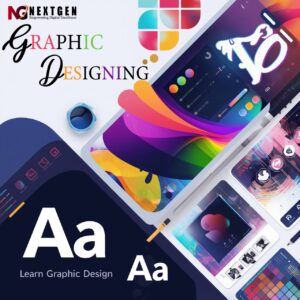Best Design Academy
In a book she wrote in 1980 Patricia Laban claimed that the most serious weakness of questionnaire design was theory deficiency. Twenty Professional Training Academy five years on despite the many books and articles that have since been published on the topic and regardless of the fine research that has been undertaken into aspects of the process an integrated theory of questionnaire design still eludes us. Laban book was heavily attacked by Jean Converse in a Public Opinion Quarterly review and has never been referenced in a Public Opinion Quarterly article.
Public Opinion Quarterly is the major survey research journal. It is not cited in any of the well known survey research. Yet it is in my view a thought full and thought provoking book. This article restates the basis for a systematic theory of questionnaire design advanced by Lebow and builds a framework that encompasses Laban Design Academy theoretical principles and the later work of Jenkins and Dillan Suman Bradburn and Schwarz Harkness Fowler Belson and others. This model is not a theory of questionnaire design but it is a conceptual model of the process and a brief logical structure for how to go about the task of questionnaire design.
The character of higher education has been in the midst of radical change. The paradigm shift from the process to outcomes orientation reverses the direction of all higher education procedures in America and Europe.
This is the change that involves and demands adjustment of the examining process processes the latter must emerge out of the competencies that are to be developed in students. The shift from processes to outcomes in the fields of Higher education has already brought a succession of changes in course design and structure but the problem of administering competency based assessments particularly in distance education is still pending. In the years to come people will barely take jobs for life.
The Overall Framework
The general structure of Online Skill Academy questionnaire design. It is symbolized by a triangle or pyramid and general principles placed at the summit and specific principles at the base. At the summit of the pyramid is respondent orientation and at the base specific question wording and graphic design principles. The concept being aimed at here is that there is a small set of broad principles of questionnaire design which spread out into a wider set of detailed principles.
The pyramid is purposely split between general and specific principles to show how the argument is that much is written about questionnaire design begins at the level of what I have termed as being specific principles. This is not to imply that this writing does not have any wider conceptual framework but that if it does Freelancing & Design Training, Career Development Academy, Career Development Academy, Graphic Design Training Academy, Web Design Training Academy, it is normally assumed or implicit. The single exception to this is the paper by Jenkins & Dillan 1995 which considers graphic language cognition visual perception and motivation as antecedents to developing principles of self administered questionnaire design.
General Principles
Laban general principles of questionnaire Creative Design Skills design. These general principles are not established in Laban book as they are here presented. Represents my understanding of Laban ideas and the logical organization of them. It is an understanding and organization which is sensible to me and I make no higher claim on the idea than that. If there is one basic principle of questionnaire construction it is that the respondent determines what you can do the kinds of questions you can sensibly ask the kinds of words you can sensibly use the ideas you can investigate the approach you can take.
This is why a Adobe Photoshop survey of doctors say of doctors can be and should be a very different thing to a
general population. In order to discover what is in respondents minds Laban contends that you need to ask them questions they can answer truthfully regarding their body environment their awareness their information and their prior conduct. This is a controversial notion since it implies that attitude and opinion questions have little or any role.
This assumption that attitudes and opinions are not very significant is not essential to the proposed framework of questionnaire design. If it were eliminated the integrity of the framework is not affected. There is however no proof that attitudes predict behavior well and even if there is a correspondence between attitudes and behavior the causality is not established. Accordingly as a general principle attitude questions must be substituted with questions regarding respondents environment consciousness knowledge and behavior.
Underlying this argument is the presumption that the goal of most surveys is prediction of human behavior. But much of attitude and opinion work is conducted without even behavioral implications in mind the assessment of attitudes and opinions is then merely seen as an end in itself. But not all opinions or attitudes are necessarily of equal worth Digital Art & Illustration Academy and data on respondents environment consciousness and knowledge can be utilized to weight their views to provide a more realistic indication of the views of the population in question.
Specific Teacher Nextgen
Laban book also includes what I have referred to as specific principles. But her explanation of such principles is hardly exhaustive. This is largely a factor of the fact that most of the empirical research in these fields has occurred since 1980. As such, much of the particular principles that have been used in the proposed framework of questionnaire design. Particular questionnaire design principles are separated into three Freelancing Courses Academy sections each dealing with one of Laban questionnaire layers question. Within each section the principles established become increasingly increasingly specific. Although the sections are presented as distinct and are dealt with separately in the discussion that follows this.
As with all questionnaire design one thing cannot be addressed in isolation of the others. This becomes increasingly evident as the established principles become increasingly specific. Therefore the section to which certain specific considerations of questionnaire design are assigned is somewhat arbitrary and in Online Earning Skills certain instances aspects may be relevant to more than one section.
Other Issues
In her research with a text analytical approach to questionnaires Harkness introduces some interesting issues regarding the very nature of questionnaires. For instance where does a self completion questionnaire start and finish with the supporting letters with the first question or somewhere SEO Training Institute in the middle Harkness also speaks on the textual meaning of questionnaires and the argument that whatever we include or leave out of questionnaires might end up being used as evidence against us.
That is to say the exchange of researcher and respondent isn’t necessarily restricted to what we’d normally consider a questionnaire or necessarily to questions or words that we use. This might be seen as a further general principle. Because of his research on survey question design and respondent interpretation Belson formulated 15 sets of hypotheses regarding respondent misunderstanding of survey questions and the causes and nature thereof. The question design principles of Belson included here are an elaboration and development Web Development Academy, Digital Marketing Academy, Digital Marketing Academy, Skill Design Academy, Best Training Institute, of these initial guidelines.
Purpose of the Study
The aim of this comparative case study was to investigate the effect of portfolio assessment on students’ beliefs about self efficacy and understanding in a graphic design course. Justifications of the purpose of the study are various. Through research and discovery the state of the literature at present verifies that the tools of assessment applied by on ground institutions vary significantly from those applied by online institutions Skill Design Academy Online in the higher education sector.
The literature on portfolio assessment and their application as a formative tool of assessment within student assignments mentioned the advantages brought about by the students and how they impacted achievement. The analysis of portfolio assessment and their ability to promote understanding and students self efficacy in an online course in graphic design is what this study is going to address. The purpose of the study was to respond to the gap in knowledge regarding the application of portfolio assessments in distance education and their implications on learning quality in online courses.
The reality is Design Training Center that as technology has been advancing rapidly and online learning as a means of delivering knowledge the demand to create new types of online testing has remained largely unmet. While instructors require improved understanding of assessment techniques and their applicability online students require increased confidence in meeting the responsibility and process offered in online learning environments.
The findings of the research on the one hand will direct further studies in the area of portfolio assessment in distance education and, on the other hand offer recommendations for enhancing the quality of assessment procedures applied in distance education.
Organization of information
Another benefit of visual spatial over sentential representations is that they structure information by locating it in space. Clustering related information is an intrinsic feature of iconic displays. Space in the display in such displays corresponds to space in the world so that if the representation of two things is near in the display then those things are probably near in the world they represent. Higher things in the natural world Skill Development Academy are more highly related.
For instance objects apply forces to objects they are in contact with and illnesses transfer to proximal areas before they transfer to distal areas. So information that must be related in interpreting and inferring from iconic displays will tend to be coded by visual properties that are proximal in the display. In the Online Learning Academy more abstract realm of digital information related information is not necessarily close in space. Yet relational displays tend to structure information in a way that the representations of related entities are proximal supporting search and integration. Graphs structure entities by locating them in a space defined by the x and y axes.
Thus, similar entities are presented as proximal. For instance in a scatter diagram with sample of people’s income plotted against their education the points for people with 9similar incomes and educations are clustered together Online Courses in the display.
Conclusions
Though cognitive scientists have made significant contributions that guide visual display design, numerous challenges still exist. We are now able to say more about the structure of data graphs than about other forms of Photoshop & Illustrator Training graphic displays since graphs have been given more attention by cognitive scientists. Although cognitive scientists have enjoyed fair success in describing the cognitive processes and enhancing the design of displays for well defined focused tasks there remains uncertainty as to how these approaches will extend to more ill defined and complex tasks like data exploration and more complex displays being designed by the information visualization and scientific visualization communities.
We have outstanding questions about when to design separate optimal displays for particular tasks and when to design Video Editing a general display that can handle many tasks. We do not know much about whether and how people make use of the interactive functions offered by new visualization tools. Although individuals have robust intuitions regarding the effectiveness of displays these are not invariably in accordance with real world effectiveness so there is an evident need to empirically test display designs and continue to create cognitive models that will enable us to predict the effectiveness of displays a priori.
We trust that this subject will ignite improved design of displays and further research into cognitive science of visual displays to solve the numerous remaining issues in Animation Courses research on visual-spatial displays.




